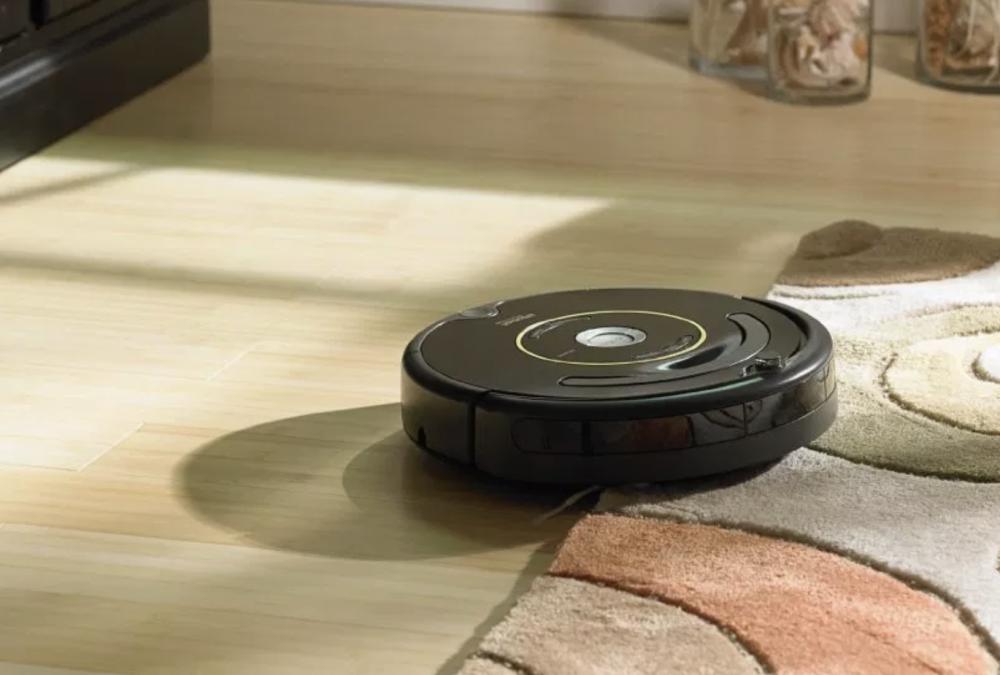Last month I got a robotic vacuum and I am a little obsessed with it.
If you haven’t seen one, a robotic vacuum cleaner is small, round and automatically vacuums the floors for about 2 hours. Its 2 ½” height allows it to vacuum under beds and furniture and it knows how to hug the perimeter. When the battery gets low, it returns to its recharging station.
So why I am enamored with it (besides loving how clean my floors are)? I used to write code and I am fascinated with its programming. In truth, my robot is not particularly intelligent, its route around my house appears to be random and it keeps getting stuck in the same places. It also takes a circuitous route when it returns to its home base for recharging. It appears to leave virtual breadcrumbs and retraces its steps rather than go directly back to its charging station. Once I left the front door open and it followed me outside, attempting to vacuum the lawn.
In researching robots, my first question is what is the difference between a robot and an ordinary machine? Bottom line, there is no consensus. Wikipedia defines it as “a mechanical or virtual intelligent agent that can perform tasks automatically or with guidance, typically by remote control.”
But children’s toys, drones, TVs, computers, Alexa, cars and even some everyday appliances could fit in this definition. I have chosen to define robots as moving objects that perform programmed functions that do not require continuous human monitoring.
The earliest robot in history depends on your definition of robots. But my definition would credit the first robot to the Muslim scholars of the 8th, 9th and most famously 12th century.
These scientists apparently learned the basics from the Greeks but moved past water clocks to automata. The Arabs were the first to use the concept of robotics to aid humans. The most prolific scientist, Al-Jazari, used hydropower to create an automated peacock, a waitress who could serve drinks, and other interesting machines. Al-Jazari published The Book of Knowledge of Ingenious Mechanical Devices, which described his work, otherwise it would have been lost. As it was, with limited communication capabilities, his work was relegated to obscurity.
It took years before it was rediscovered and European hobbyists developed automata, which were featured in the charming movie Hugo.
But the name “robot” didn’t appear until the 1920’s. A Czech playwright produced a play about a humanoid mechanical creature and called it a “robot”. “Robot” is actually derived from a Czech word which means “forced labor”.
The invention of the transistor, sensors and computers have accelerated robotic development. Robots are famously used in factories and self-driving cars are not far behind.
The biggest problem with the humanoid type robots is movement. It turns out that walking has been notoriously difficult to recreate. While robotics is advancing quickly, we still have a way to go before we can recreate Rosie of the Jetsons.
I recently got another robotic vacuum for my other home. I chose a different brand so that I could study its movements. This one’s movements are flashier; it likes to spin more but it shares the same limitations as my other robot.
There are a number of robot competitions and PBS featured one in a NOVA episode. RoboCup and DARPA are the most prestigious competitions. Contestants are provided with a series of tasks that their robot must perform and the contestant team is free to build any kind of robot that they choose. It is truly an International competition, usually by teams who are associated with a University. Each year DARPA changes the focus. One year, it was firefighting. This year, it will be automobiles. The DARPA contest winner is awarded $2M and it is fun to watch the “creatures” that they fabricate.
We are on the brink of this new technology making our lives easier, self-driving cars are almost there. I don’t fear them taking over, I welcome integrating them into my life. We have a long way to go, but it will be fun watching the journey.
Angela Rieck, a Caroline County native, received her PhD in Mathematical Psychology from the University of Maryland and worked as a scientist at Bell Labs, and other high-tech companies in New Jersey before retiring as a corporate executive. Angela and her dogs divide their time between St Michaels and Key West Florida. Her daughter lives and works in New York City.



Pam Vogel says
We got a new to us senior dog (pit/boxer mix) and she sheds a lot. My husband bought a robotic vacuum and it is amazing. The first time or two we watched in amazement and since he is an engineer, he too tried to figure out patterns and how it is programmed. We named it “DJ Roomba”! Interesting information about robots, thank you!